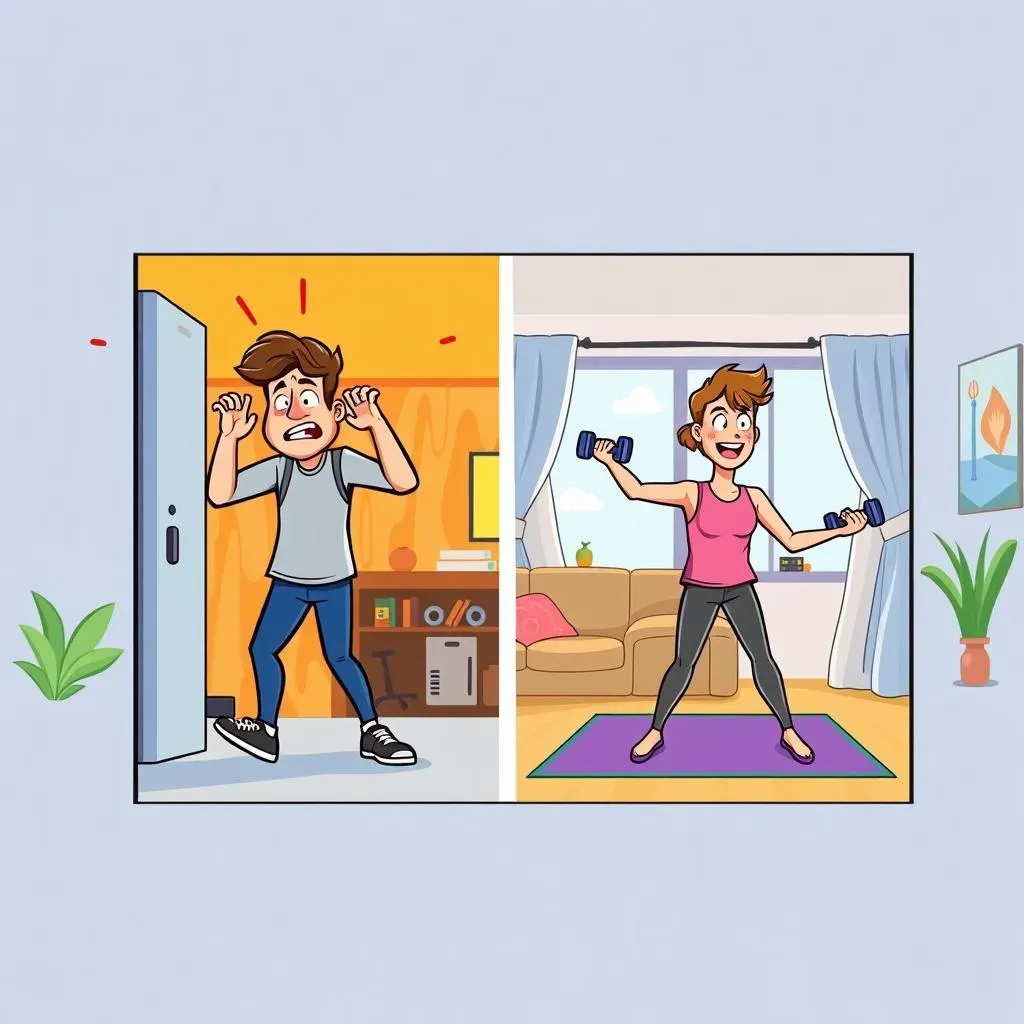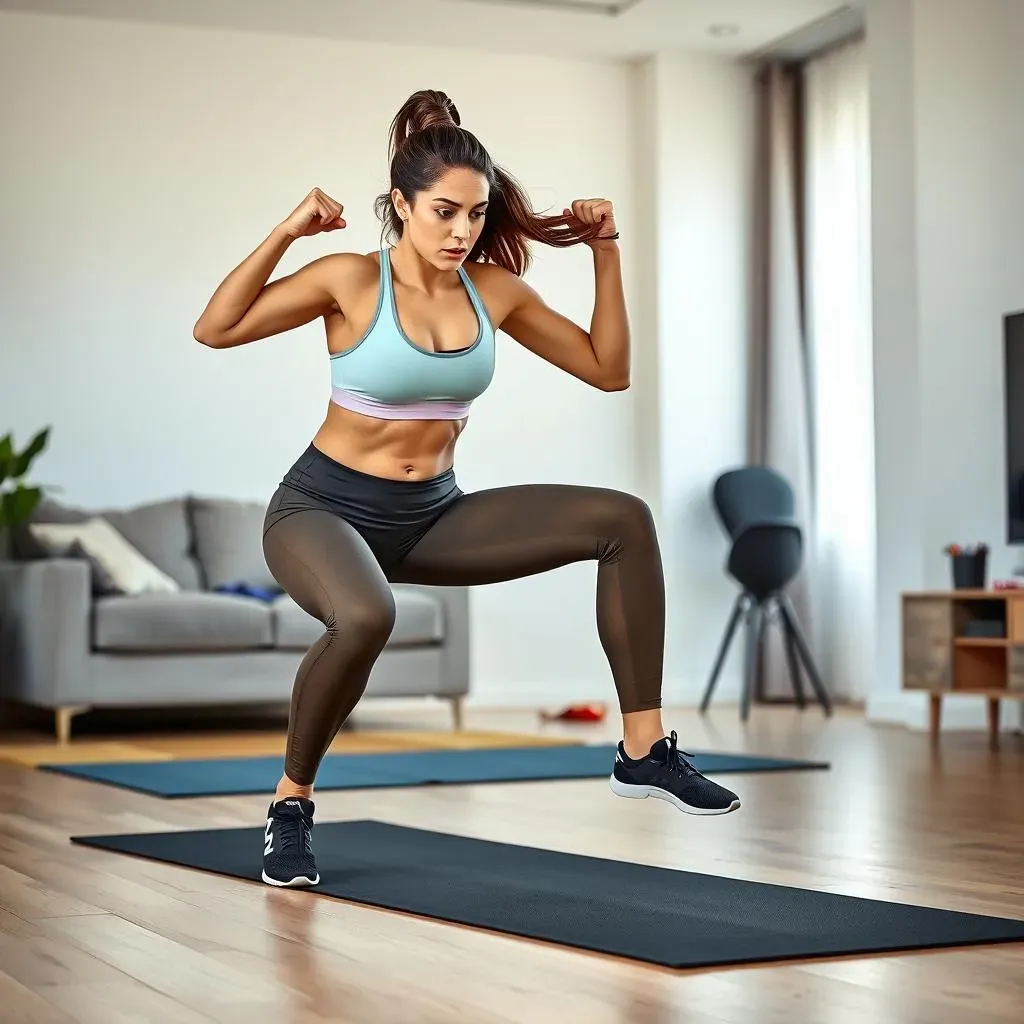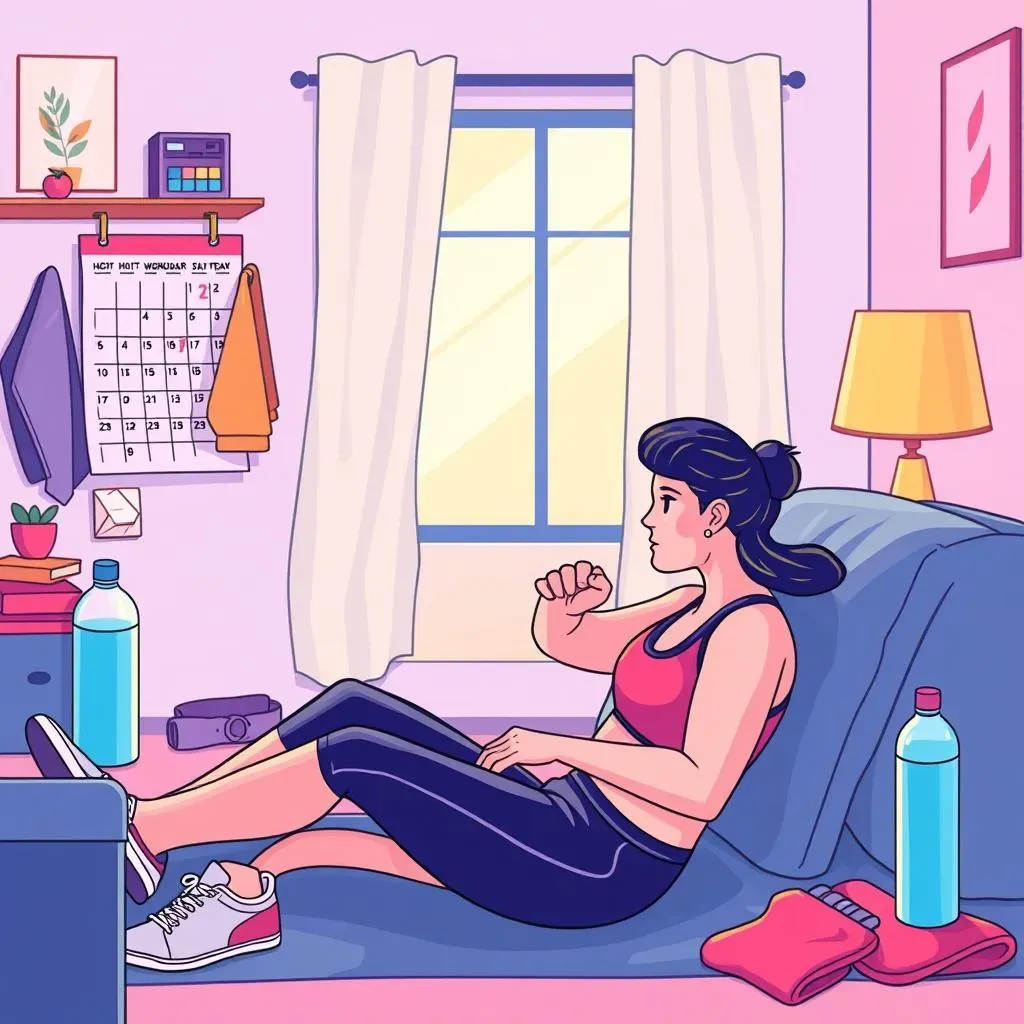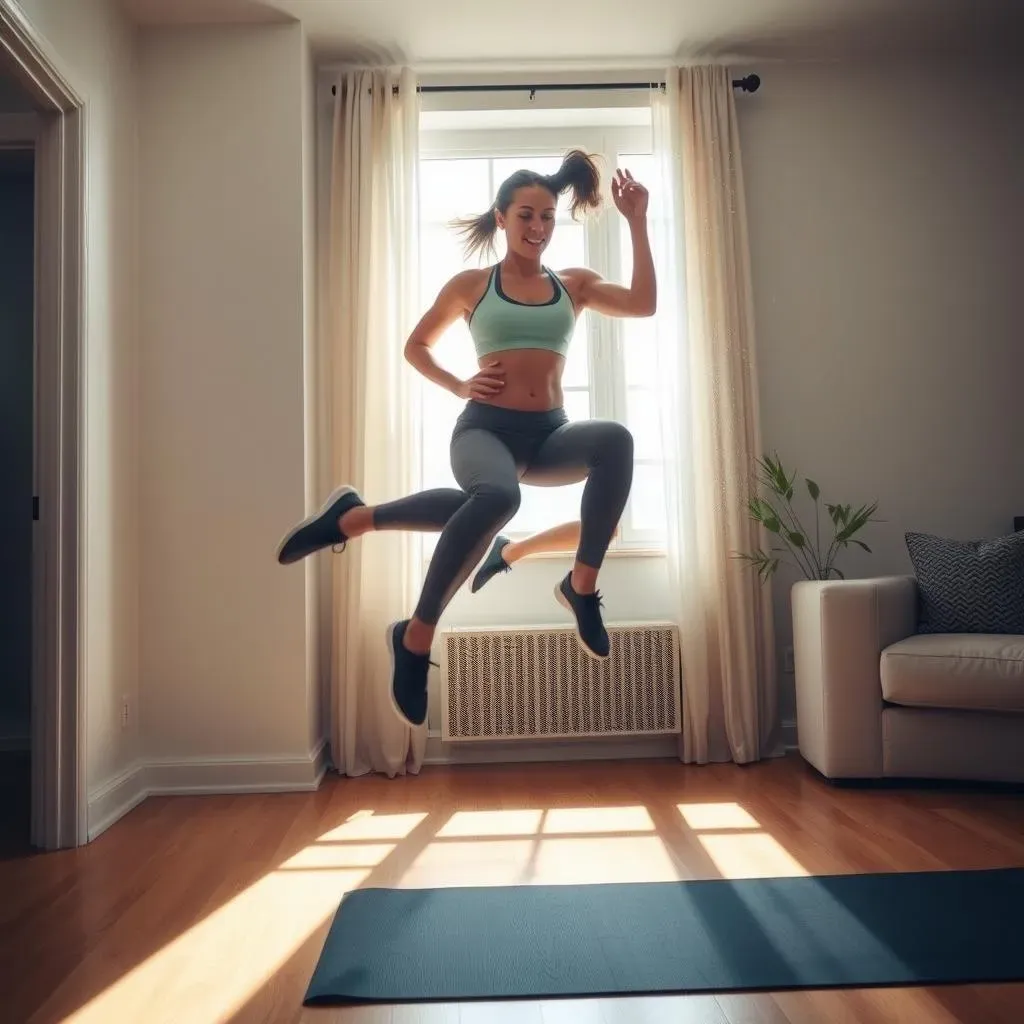Table of Contents
Feeling squeezed for time but still want to break a sweat and actually see results? The gym feels like a commute in itself, and honestly, sometimes leaving the house just isn't happening. Maybe you've heard the buzz about HIIT – High-Intensity Interval Training – and wondered if you could really get that kind of punchy workout without all the fancy equipment or crowded classes. The good news is, you absolutely can build an effective hiit workout routine at home that delivers serious bang for your buck in minimal time.
Why Bother with a HIIT Workout Routine at Home?

Why Bother with a HIIT Workout Routine at Home?
Look, we get it. Life is busy, and fitting in a trip to the gym can feel like scheduling a moon landing. That's exactly why bothering with a hiit workout routine at home makes so much sense. You ditch the commute, the locker room awkwardness, and the wait for equipment. Instead, you step into your living room, your garage, or even a patch of yard, and get a killer workout done in less time than it takes to decide what to watch on Netflix. It's efficient, it's convenient, and frankly, it's less of a hassle than trying to coordinate schedules with a spin class that's always full. Plus, who needs an audience when you're gasping for air mid-burpee?
Building Your Effective HIIT Workout Routine at Home

Building Your Effective HIIT Workout Routine at Home
Starting with Structure: Interval Training Basics
so you're sold on the idea of a hiit workout routine at home. Great. But how do you actually build one that doesn't just feel like random flailing? It starts with understanding the core principle: intervals. You're going to work hard, really hard, for a short burst, then rest briefly, then repeat. This push-and-recover cycle is what jacks up your heart rate and metabolism. The key is to pick exercises you can do safely and effectively in your space and string them together with specific work-to-rest ratios. Don't just jump around aimlessly; have a plan for how long you'll work and how long you'll recover. Here are a few common interval structures to consider when building your routine:
- Tabata: 20 seconds work, 10 seconds rest (repeat 8 times for 4 minutes total per exercise)
- 30/30: 30 seconds work, 30 seconds rest
- 45/15: 45 seconds work, 15 seconds rest (more advanced)
- 60/30: 60 seconds work, 30 seconds rest (focus on endurance within the interval)
Selecting Moves and Mindset for Your Home Routine
Once you grasp the interval timing, it's about choosing the right ingredients for your hiit workout routine at home. You need exercises that get your whole body involved and elevate your heart rate quickly. Think compound movements – stuff that uses multiple muscle groups at once. Balance is key; don't just do jump squats for 20 minutes. Mix in some upper body, some core, and definitely keep those cardio bursts coming. Remember, you're aiming for high intensity during the work periods, meaning you should feel pretty gassed by the end of each one. If you can hold a casual conversation, you're not working hard enough. What's the biggest mistake people make when building a home HIIT routine? Trying to do too much too soon. Start with fewer exercises or shorter work intervals. You can always add more as you get fitter. A good warm-up is non-negotiable, even if you're just walking around your living room. And cool-down isn't optional; your body needs to transition back to normal without collapsing in a heap.
Essential Exercises for Any Home HIIT Routine

Essential Exercises for Any Home HIIT Routine
Building Blocks: Dynamic Moves That Get You Pumping
so you've got the interval timer set and a clear space in your living room. Now, what moves do you actually *do* during those intense bursts? Think dynamic, multi-joint exercises. Stuff that uses your legs, arms, and core all at once. These are your workhorses for a solid hiit workout routine at home. We're talking about the classics that require zero equipment but deliver maximum effort. You want exercises that can get your heart rate up fast and challenge multiple muscle groups simultaneously. Burpees are the obvious, slightly sadistic choice, but there are plenty of others that won't make you question all your life choices quite as much. Squat jumps, mountain climbers, high knees – these are your bread and butter. They’re effective, scalable, and you can do them anywhere you have a bit of floor space.
Here are a few go-to exercises to mix and match in your home HIIT sessions:
- Jump Squats: Explode up from a squat.
- Mountain Climbers: Plank position, drive knees to chest rapidly.
- High Knees: Run in place, bringing knees up high.
- Burpees: Squat, plank, push-up (optional), jump forward, jump up.
- Jumping Jacks: The elementary school classic, still effective.
- Plank Jacks: Plank position, jump feet out and in.
Adding Variety and Listening to Your Body
Sticking to the same few exercises gets boring, and your body adapts. To keep your home HIIT routine fresh and challenging, you need to mix it up. Once you've mastered the basics, start adding variations or slightly more complex moves. Think jump lunges instead of just lunges, or adding a push-up to your mountain climbers. Don't be afraid to get creative, but always prioritize form over speed, especially when you're tired. Doing 10 perfect reps is better than 20 sloppy ones that could lead to injury. And listen to your body. If something feels sharp or wrong, stop. Pushing through pain is just dumb, not dedicated. You're trying to build a sustainable routine, not end up on the injured list.
Ready to try building your own sequence? Pick 5-6 exercises from the list above or your own favorites and string them together using one of the interval structures we discussed earlier. How does 30 seconds work, 15 seconds rest for 3 rounds sound to start?
Making Your HIIT Routine at Home Stick: Tips and Tricks

Making Your HIIT Routine at Home Stick: Tips and Tricks
Scheduling Your Sweat Session Like a Boss
you’ve got the moves, you understand the intervals, and you're ready to tackle your hiit workout routine at home. But how do you actually make it a regular thing and not just a one-off burst of enthusiasm? Treat it like any other important appointment. Block it out in your calendar. Seriously. Whether it's first thing in the morning before the chaos starts, during a lunch break, or right after work, decide when it's happening and commit. Lay out your workout clothes the night before. Have your water bottle ready. Remove as many barriers as possible between thinking about the workout and actually doing it. Consistency trumps intensity, especially when you're building a new habit. Doing three solid 20-minute sessions a week is far better than one epic hour-long session followed by two weeks of nothing because you "didn't have time."
Progression and Avoiding the Dreaded Plateau
Once you're consistently hitting your home HIIT sessions, you'll start to notice you're getting fitter. Those jump squats feel a little less like impending death, and maybe you can push a bit harder during the 30-second work intervals. This is where progression comes in. Your body adapts, and if you keep doing the exact same thing, you'll stop seeing results. To keep your hiit workout routine at home challenging and effective, you need to gradually increase the difficulty. This could mean extending your work intervals by 5-10 seconds, shortening your rest periods slightly, adding another round to your circuit, or choosing more advanced exercise variations. Don't try to do all of these at once; pick one or two ways to dial up the intensity every few weeks. Just be mindful not to push too hard too fast, which is a fast track to burnout or injury. Recovery is just as crucial as the work itself.
What happens if you miss a scheduled workout?
Don't beat yourself up. It's not the end of the world. Just get back on track with the next scheduled session. One missed workout doesn't erase all your progress.
Your Home HIIT Journey Starts Now
So, there you have it. Crafting a legitimate hiit workout routine at home isn't some fitness fantasy; it's entirely achievable with zero equipment and limited time. We've covered why it's worth your effort, how to structure your own sessions, and provided a few solid moves to build on. It demands effort, sure, but the payoff in efficiency and results is significant. Stop waiting for the perfect gym or endless free time. Your living room is ready when you are.
